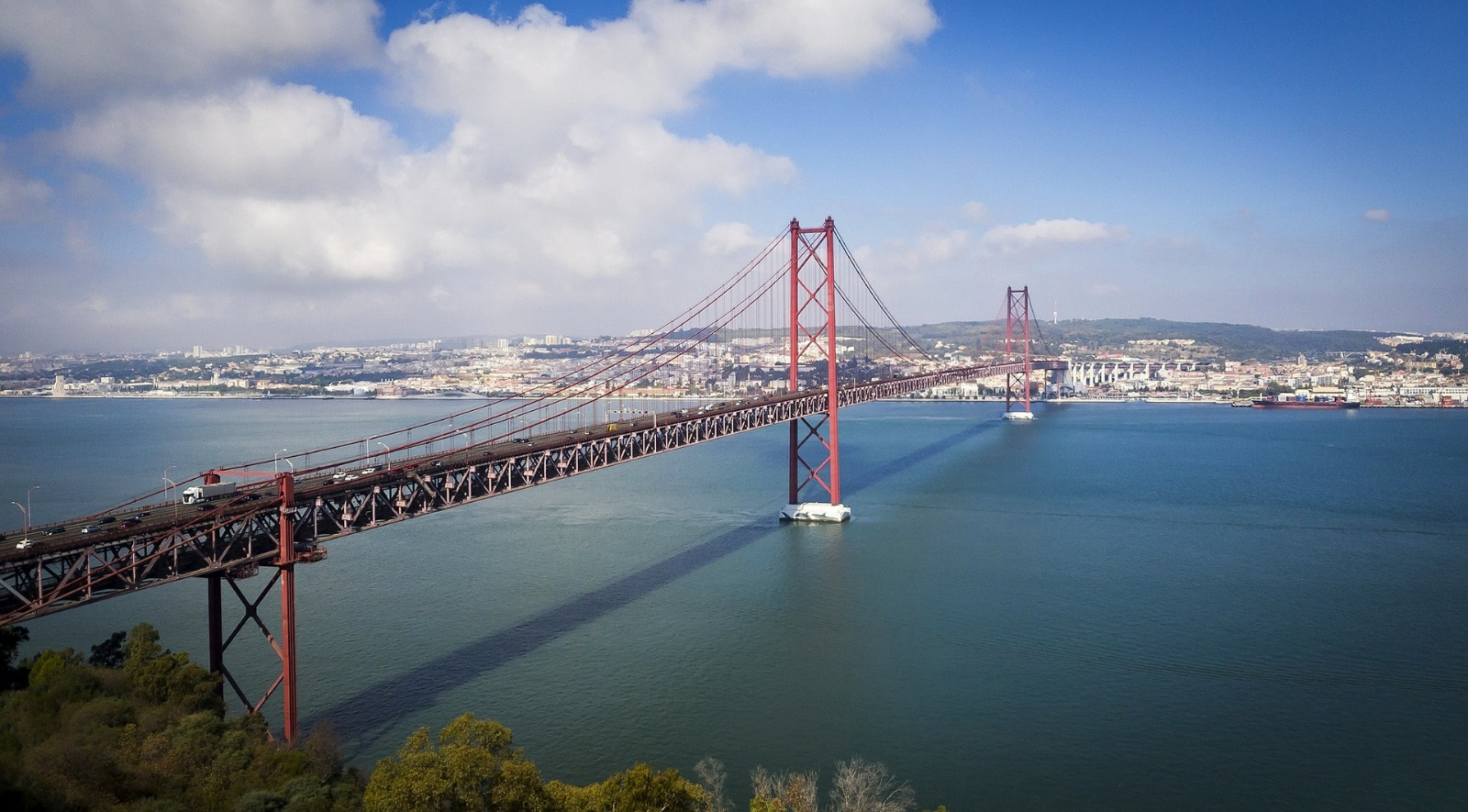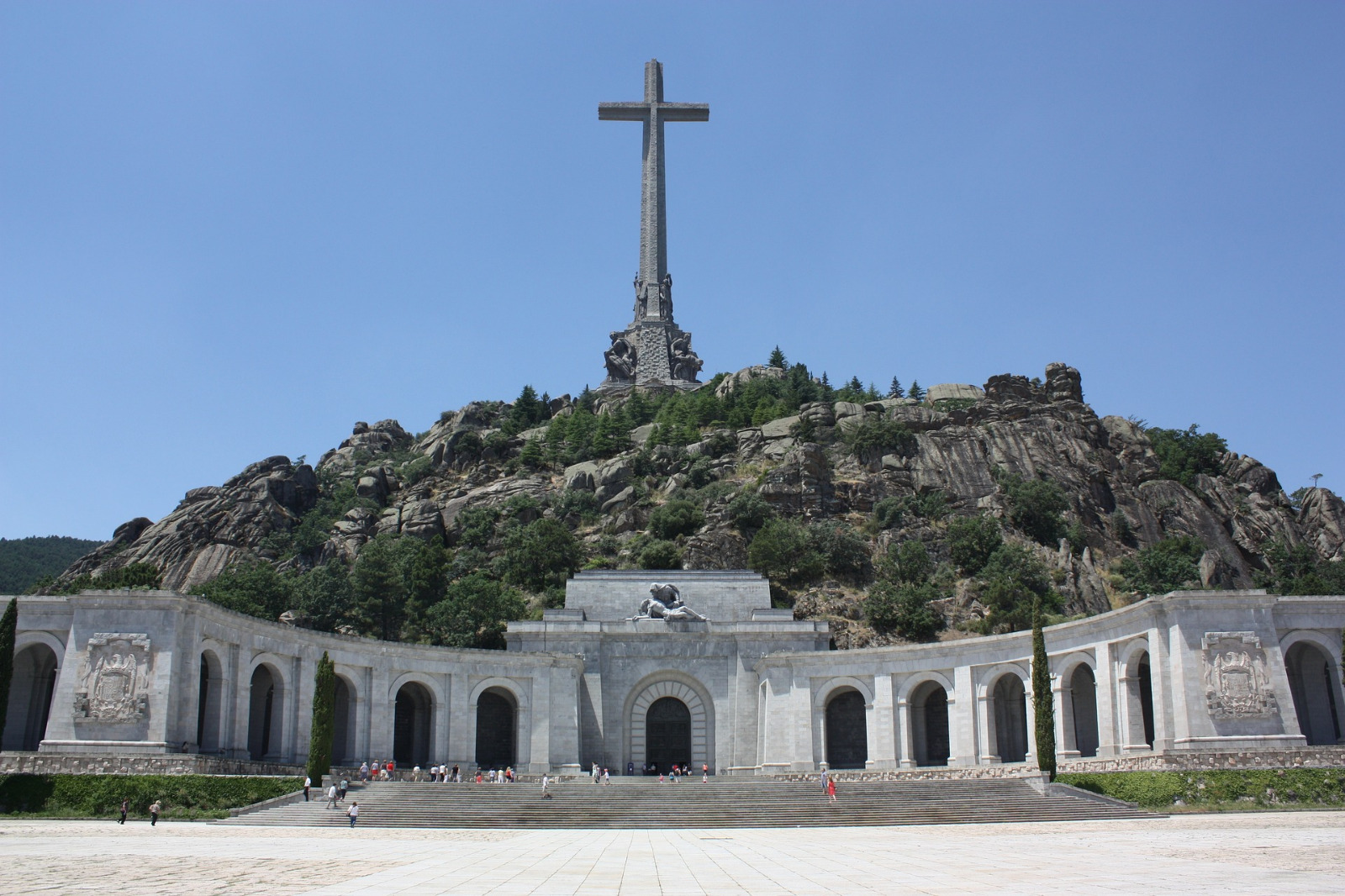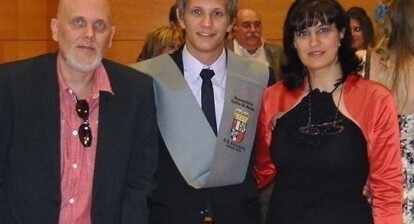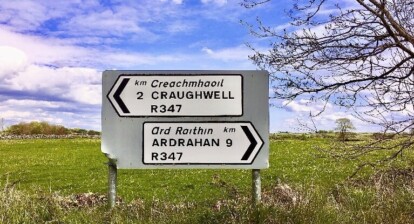You can try to learn from your past, but your past already determines who you are in the present. For example, you can sometimes find yourself using phrases that old friends used to say. Maybe, you pick up the habits of your parents and follow them unconsciously when you start living alone. It takes awareness to see those influences and effort to change them. According to our author Pedro from Spain, this also applies to countries’ societies.
My First Ride in Portugal
When I first arrived in Lisbon to start my Erasmus scholarship, the first trip I took through the city was a taxi ride. The city, full of sunburned tourists, seemed to flow from its hills towards the shining blue water surrounding it. I was in awe while looking at the colourful streets from the car window. The driver was friendly, we talked about my life in Spain, his life in Portugal and, finally, about Lisbon.
A Bridge Raising Questions
After a while, I saw the 25 de Abril Bridge, a huge, suspended structure that connects Lisbon with the city of Almada over the Tagus River. Its name refers to April 25th, 1974, the date of the Carnation Revolution. This movement ended the autocratic leadership that had ruled Portugal since 1926. To be frank, I only knew little about my destination before, so I asked the taxi driver to tell me more about the bridge carrying this special name.

Steely Remnant of Dictatorship
I didn’t know much about Portuguese history, but I guessed correctly what could have happened on the 28 May. That was the date of the coup d’État that had once been the beginning of the dictatorship in Portugal. I felt the familiar sensation of sharing my space with the ghost of a 20th century autocrat. I knew that Spain and Portugal had similar experiences with totalitarianism. Still, the awkwardness of encountering the remnants of past autocrats was immediately apparent. While Spain was still trying to exorcise the ghost of Francisco Franco, Portugal was dealing with the memory of António de Oliveira Salazar.
Inevitable to Compare
A few weeks later, I started my classes at the Universidade Lusófona of Lisbon. I had some freedom to choose between different subjects, so I decided to join a contemporary history class. During one lesson, the teacher started a debate when she asked the students about a controversial topic: the project of a museum dedicated to the dictatorship. The idea was proposed in the municipality of Santa Comba Dão, the hometown and final resting place of Salazar.
The class was immediately divided. Some criticised that the museum could become a place to honour the autocrat. Others thought it could be a good opportunity to teach about the dangers of totalitarianism. A smaller group was keen on the idea that history is not black and white, implying that the dictatorship was part of a respectable group of “grey events” in the country’s history. However, the question remained: How to deal with these “grey events”?
Photos taken by the author during his Erasmus: a celebration of the Republic of Portugal's anniversary at the City Hall; the streets of Lisbon.
Spain’s Burden
Discussing with my Portuguese peers, I got reminded of a partly similar debate in my home country: The contested debate about the Valle de los Caídos, or Valley of the Fallen in Spain. This monument, crowned by a 150-metre cross, was created to honour the soldiers who died in the Civil War (given that they were on the dictator’s side, of course). Built using forced labour by political prisoners, this religious and political memorial was the resting place of Francisco Franco. In 2019, the Spanish government decided to relocate the remains of the dictator to a municipal cemetery – but the Spanish citizens remained divided in the question whether to agree on this decision.
Remember or Forget?
It may seem surprising that it took 40 years of democracy to remove the corpse of Franco from the monument. However, every political decision about the symbols of the dictatorship is prone to causing controversy. Some argue that the government shouldn’t “reopen closed wounds” about the dictatorship and civil war by meddling with its remnants. The same anxiety could be felt in our university’s classroom when we had the debate about Salazar’s museum. Is it more dangerous to remember than to forget?

A Helicopter for an Autocrat
I still remember the day of September, some time before I came to Portugal. Classes had just started in college in Seville, and it was the day of Franco’s exhumation. It was a big deal and most students discreetly watched it live on their phones, under the desk. The event had become an unwanted spectacle, and nobody wanted to miss it. The scene became gradually more surrealist when the coffin, carried out solemnly from the Valley of the Fallen, was loaded into a helicopter. Then, the deceased dictator started to fly through the sky towards the cemetery, where excited “fans” of dictator Francisco Franco waited to see their idol.
Free Trips to Franco or: Autocratic Tourism
It became clear that symbolic acts, such as the removal of Franco’s remains, had the power to expose the sympathy of some citizens towards the dictatorship. One could look at symbols and monuments and think of them as relics of the past that had lost their significance. However, places like the Valley of the Fallen are tools that can be used to perpetuate the Franco’s legacy. Before I was born, a town near my home offered free trips to the Valley, paid by the council, to commemorate the dictator’s death. The neighbours could pack a light meal, hop on a bus, and enjoy a day of autocratic tourism. The mere existence of the monument provided the perfect excuse to promote a certain admiration for the dictatorship.
As a country having lived through a dictatorship, you carry your burden – and in the best case your learnings, too. Concrete examples and horrific evidences of what damage authoritarianism can do to whole societies can be easily pointed out. After four decades of oppression, the collective imagination has images of the dangers of unquestionable power and control. For many, both Salazar and Franco are figures that represent a failed society and a “wrong” political system.
A Conflict Involving Families
Even if we accept that monuments and symbols can have an influence on our view of dictatorships, there must be more factors that make this issue eternally controversial. One of the biggest obstacles is that it is difficult to analyse the past, especially when family narratives are involved. The stories of our grandparents can make us understand history from their perspective. This became clear to me when there was a debate in my friend group about the “Blue Division”.
Dealing With the Family’s Past
Some people in my friend group thought that it was a shame that hate groups tarnished the memory of a respectable military unit. This “hot take” left others (including myself) perplexed. How could soldiers who helped Hitler be remembered fondly?
For some, the Blue Division’s mission was to fight the USSR and shouldn’t be linked to Nazism or the Holocaust. Others responded that nothing could justify supporting a fascist regime. While the argument kept dragging out, one of the defenders of the Blue Division stated: “My grandfather wasn’t a Nazi”. That surprising fact only made the argument sourer. It’s not an easy thing to express that you think a friend’s grandpa was a fascist sympathiser. At the end, the conversation went nowhere. The funny thing was that we probably had recreated the same discussion our great-grandparents would have had if they were the ones arguing.
Experiencing Dictatorship First Hand
Family is a powerful force in the way we think. During my stay in Portugal, I got very interested in how people dealt with their historical past. I wanted to see the differences in how people navigated this complex topic compared to Spain. However, I mainly found similarities. The opinions of most people were very determined by their parents and grandparents’ stories. Some were more critical of inherited ideas than others, but it was mostly clear that they were looking at the Estado Novo from the perspective of their families.
My great-grandfather, from whom I have inherited my name, was jailed and beaten during the dictatorship. He could get out eventually, but not before he cut off his wrist with a piece of his watch to stop the torture and avoid rating out other dissidents. Some relatives are still involved in the search for the bodies of other family members that were executed by the totalitarian forces. I have never experienced any of this directly, but I believe this knowledge puts you in a certain position, just like the acquaintance whose grandfather took part in the Blue Division.
Fallback to Autocracy? Right-Wings on the Rise
Where do we go from here? Is the legacy of Salazar and Franco unavoidable for Portugal and Spain? We are not going through democracy’s best moment right now. The threat of authoritarian ideologies is more real now than it was 20 years ago. After the last national Portuguese elections, celebrated in March, the far-right party Chega nearly quadrupled their representation, becoming the third-biggest party. In Spain, the similar group Vox is also the third-most-voted political force.
Critical Thinking: Now or Never
On the Iberian Peninsula, these parties make veiled references to past dictatorships to attract voters who are disillusioned with politics. This only works if people don’t have the tools to be critical of the version of history they are being told. There is still not a political system immune to corruption or abuse; that is why we need nuance. This doesn’t mean I disagree with the efforts of democratic governments to eliminate the symbols of authoritarianism. On the contrary, I would say that it is their duty to do so. Emphasising the importance of teaching history is a good place to start, but it won’t do much if it is not accompanied by encouraging critical thinking. We need to know history just as much as we need to learn how to distance ourselves from certain narratives and look for other perspectives.
For now, however, it is safe to say that the ghosts of these autocrats of Spain and Portugal will continue to haunt the occasional taxi ride.







